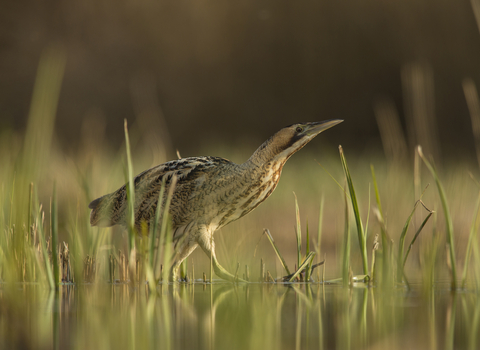
©Jamie Hall
Bittern
The shy and retiring bittern is a master of blending in and can be very difficult to spot in its reedbed home. It does sound like a booming foghorn, however, when it calls, so can often be heard if it cannot be seen.
Scientific name
Botaurus stellarisWhen to see
January to DecemberSpecies information
Statistics
Length: 70-80cmWingspan: 1.3m
Weight: 1-1.5kg
Average lifespan: max. 11 years
Classified in the UK as Amber under the Birds of Conservation Concern 5: the Red List for Birds (2021). Protected in the UK under the Wildlife and Countryside Act, 1981. Priority Species under the UK Post-2010 Biodiversity Framework.
Habitats
About
A rare and shy heron, the bittern spends almost all its time hidden away in large reedbeds, where it feeds on eels and other fish. It has wonderfully camouflaged plumage, helping it to blend into the reeds. It can also stand motionless for long periods to avoid detection.How to identify
The bittern is very well camouflaged, with pale brown plumage, streaked with beige and black markings.Distribution
A shy, rare bird found in large reedbeds, especially in East Anglia, Kent, South Wales and North West England.Did you know?
During the breeding season, the male bittern 'booms', making a deep, foghorn-like sound which can be heard up to two miles away, mostly at night. Males will mate with up to five females each season, who will each produce four or five eggs in March or April.Watch
Bittern (https://vimeo.com/444195664)
Bittern by Martin Roper
